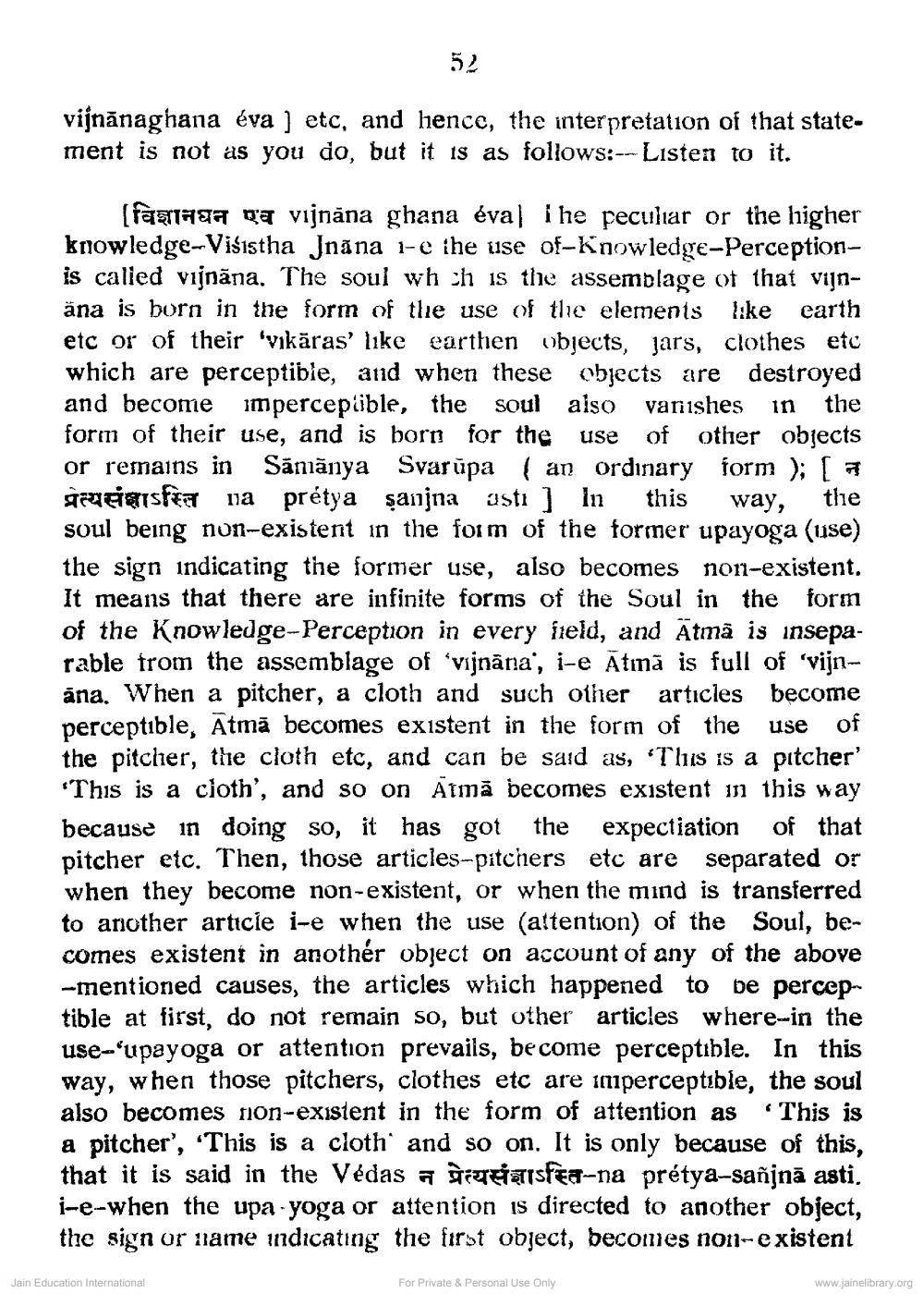________________
52
vijnānaghana éva) etc, and hence, the interpretation of that statement is not as you do, but it is as follows:-- Listen to it.
(fawaa ga vijnana ghana éval i he peculiar or the higher knowledge-Višistha Jnana i-e ihe use of-knowledge-Perceptionis called vijnana. The soul wh ch is the assemblage of that vijnäna is born in the form of the use of the elements like earth etc or of their 'vikäras' like earthen objects, Jars, clothes etc which are perceptible, and when these objects are destroyed and become imperceptible, the soul also vanishes in the form of their use, and is born for the use of other objects or remains in Säniãnya Svarūpa ( an ordinary form ); [ graciastra na prétya şanjna usti ] In this way, the soul being non-existent in the form of the former upayoga (use) the sign indicating the former use, also becomes non-existent. It means that there are infinite forms of the Soul in the form of the knowledge-Perception in every steld, and Atmã is inseparable from the assemblage of 'vijnana, i-e Atinā is full of 'vijnana. When a pitcher, a cloth and such other articles become perceptible, Atmā becomes existent in the form of the use of the pitcher, the cloth etc, and can be said as, 'This is a pitcher'
This is a cioth', and so on Atmā becomes existent in this way because in doing so, it has got the expectiation of that pitcher etc. Then, those articles-pitchers etc are separated or when they become non-existent, or when the mind is transferred to another article i-e when the use (attention) of the Soul, becomes existent in another object on account of any of the above -mentioned causes, the articles which happened to be perceptible at first, do not remain so, but other articles where-in the use-'upayoga or attention prevails, become perceptible. In this way, when those pitchers, clothes etc are imperceptible, the soul also becomes non-existent in the form of attention as “This is a pitcher', 'This is a cloth and so on. It is only because of this, that it is said in the Vedas a artistea-na prétya-sañinā asti. i-e-when the upa-yoga or attention is directed to another object, the sign or name indicating the first object, becomes non-existent
Jain Education International
For Private & Personal Use Only
www.jainelibrary.org




